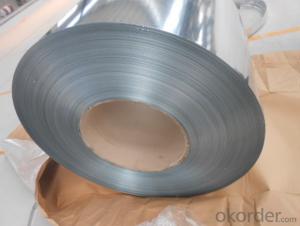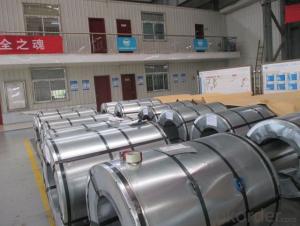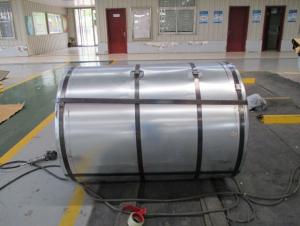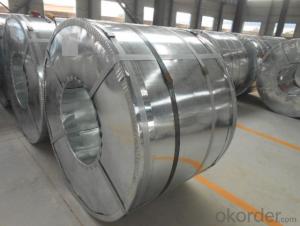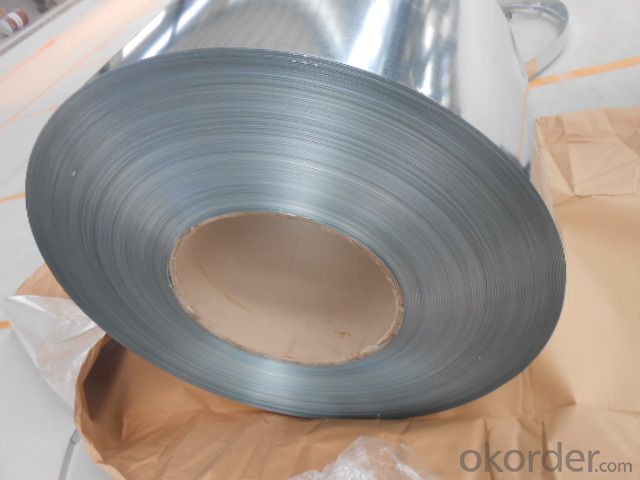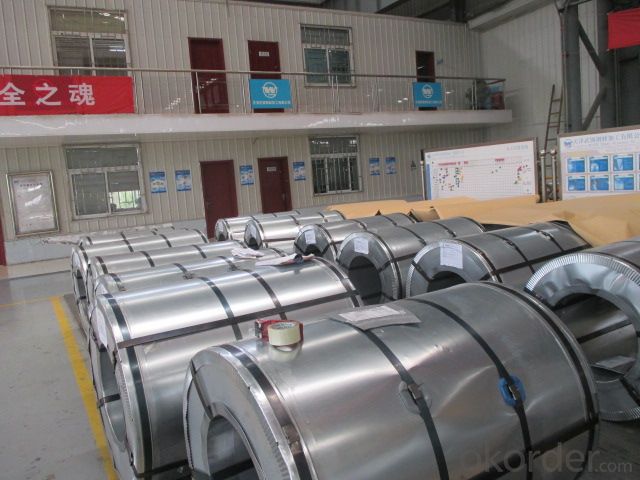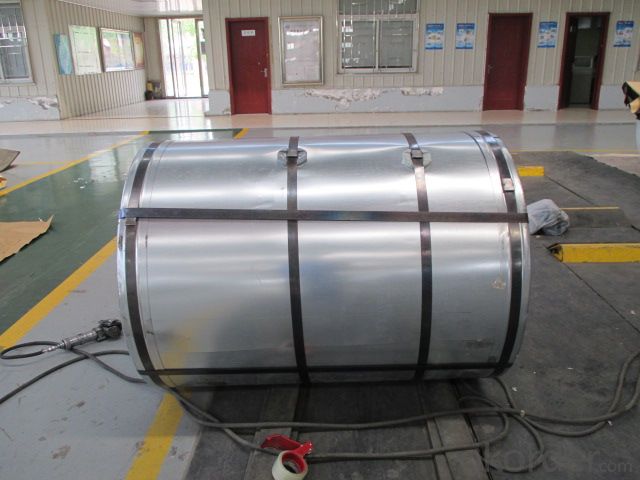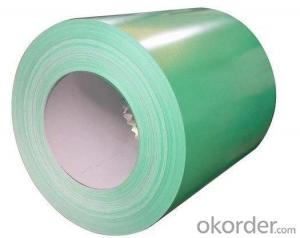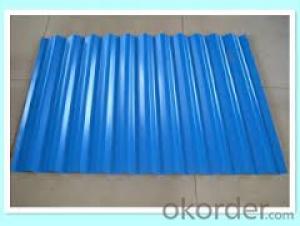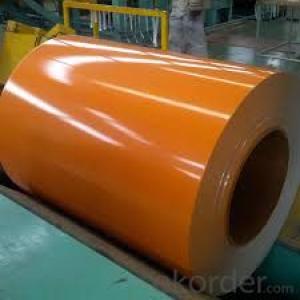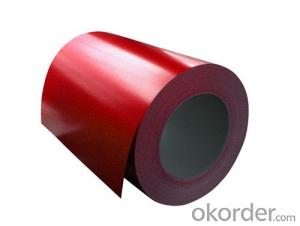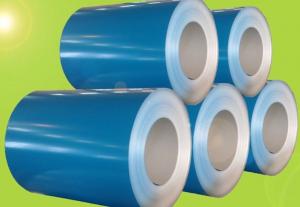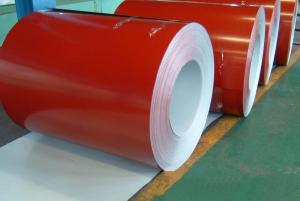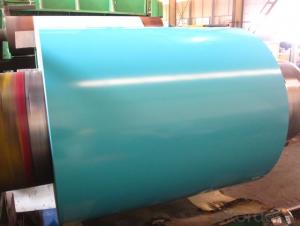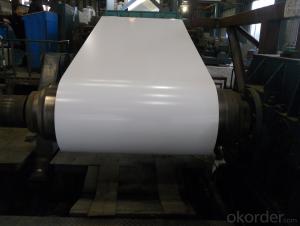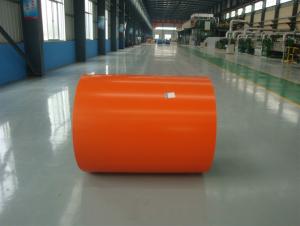STAINLESS STEEL COILS with thickness 2mm
- Loading Port:
- China Main Port
- Payment Terms:
- TT OR LC
- Min Order Qty:
- -
- Supply Capability:
- -
OKorder Service Pledge
OKorder Financial Service
You Might Also Like
STAINLESS STEEL COILS
Packaging & Delivery
Packaging Detail: seaworthy export package
Delivery Detail: on request
Specifications
1. more than 10 years’ experience on this field
2. advanced equipments
3. competitive price
4. soonest delivery
Product Description :
Commodity
STAINLESS STEEL COILS
Technical Standard: Steel Grade &Standard:J1
Surface Treatment:NO.1
Hot rolled Annealed and Pickled(HRAP)
Grade: J1 , Prime quality
Mill Edge. No connection point in each coil.Component: Ni:1% , Cu: 0.65-0.9%, Cr: 13%, Mn: 10–12%, C: 0.09-0.12%
Package:Properly packed for ocean freight exportation in 20''container
Application::home appliances, constructions, building, machineries
Our Advantages :
1. Expertise:
More than 10 years of manufacture: we know how to properly handle every step of production.
2. Competitive price:
We can offer competitive prices to our customers.
3. Accuracy:
We have excellent technicians and leaders, which can ensure our products are exactly what you want.
4. Materials:
All steel coils are made of high-quality raw materials.
5. Certificate:
Our products are certified by ISO9001.
6. Productivity:
We have large-scales of production lines,, which can guarantee all your orders will be finished in earliest time.
The furnace heating style: improved Sendzimir heating technology
Hourly output: max.76.3t/h
Process after coating: tension leveling, Passivation or oiling
Our Service
Our quality
Test Equipments of Prepainted Galvanized Steel Coil : Salt-spray tester; Atomic absorption spectrophotometer; Rockwell typer hardness tester; Tensile test machine; Metrohm titration; Laboratory Bend test machine.
Our packing
Properly packed for ocean freight exportation in 20''container, galvanized metal fluted rings on inner and outer edges, galvanized metal & waterproof paper wall protection disk, galvanized metal & waterproof paper around circumference.
R&D department
R&D department concentrates on researching and developing reliable products with best quality. The quality department test and control every process of production to guarantee the best quality of product
- Q: What is the diffrent Aluminized steel Type 1. stainless steel 409 430?
- Alloy steel is a stainless steel. The differences between the two are the composition of the metal. Alloy steel is steel with usually less than 5% of other elements, like molybdenum, copper, chrome while stainless steel is a steel with at least 10-11% of chromium.
- Q: I want a good quality, big, strong, steel knife but I want it to be a good price, say around $30 or less, $60 at the most. please add links.
- ka bar, If they are good enough for the U.S.M.C. They are good enough for you.
- Q: What are the common applications of pre-painted steel coils?
- Pre-painted steel coils, also known as pre-coated steel coils or color coated steel coils, are widely used in various industries due to their versatility and durability. Some of the common applications of pre-painted steel coils include: 1. Construction: Pre-painted steel coils are extensively used in the construction industry for roofing, wall cladding, and building panels. The color options available in pre-painted steel coils allow architects and designers to create aesthetically pleasing structures. 2. Automotive: Pre-painted steel coils are used in the automotive industry for manufacturing car bodies, interior panels, and various other parts. The corrosion resistance and excellent finish provided by pre-painted steel coils make them a preferred choice in this industry. 3. Appliances: Many household appliances like refrigerators, washing machines, and air conditioners use pre-painted steel coils for their outer panels. The attractive colors and textures available in pre-painted steel coils help enhance the appearance of these appliances. 4. Electronics: Pre-painted steel coils are also used in the electronics industry for manufacturing cabinets and casings of electronic devices like computers, televisions, and audio systems. The protective coating on pre-painted steel coils helps protect the electronic components from environmental factors. 5. Furniture: Pre-painted steel coils find applications in the furniture industry for manufacturing cabinets, shelves, and other similar products. The wide range of colors and finishes available in pre-painted steel coils allows furniture manufacturers to create visually appealing and durable products. 6. Signage and Advertising: Pre-painted steel coils are commonly used in signage and advertising applications for manufacturing display boards, billboards, and signages. The vibrant colors and weather-resistant properties of pre-painted steel coils make them suitable for outdoor use. 7. Industrial Equipment: Pre-painted steel coils are utilized in the manufacturing of industrial equipment such as storage tanks, HVAC systems, and machinery components. The corrosion resistance and high strength of pre-painted steel coils make them suitable for these demanding applications. In summary, pre-painted steel coils have a wide range of applications in various industries such as construction, automotive, appliances, electronics, furniture, signage, and industrial equipment. Their durability, corrosion resistance, and aesthetic appeal make them a popular choice for manufacturers across different sectors.
- Q: What are the different methods of testing steel coils for quality control?
- There are several methods commonly used to test steel coils for quality control. These methods ensure that the steel coils meet the required specifications and standards. 1. Visual Inspection: This is the most basic method of testing steel coils. It involves a thorough visual examination of the coils for any surface defects such as scratches, dents, or irregularities. Visual inspection helps identify any visible defects in the material. 2. Dimensional Measurement: Another important method is dimensional measurement. This involves using various tools like calipers, micrometers, or laser measuring devices to assess the dimensions of the steel coils. The measurements are compared against the specified tolerances to ensure they meet the required standards. 3. Hardness Testing: Hardness testing determines the resistance of the steel coils to indentation or penetration. It helps assess the strength and durability of the material. Common hardness testing methods include Rockwell, Brinell, and Vickers hardness tests. 4. Tensile Strength Testing: Tensile strength testing measures the maximum amount of tensile stress a steel coil can withstand before breaking or deforming. This test helps determine the strength and elasticity of the material and ensures it meets the required specifications. 5. Chemical Analysis: Chemical analysis involves testing the composition of the steel coils to verify if they contain the desired amount of specific elements. This is crucial for ensuring the coils are made from the correct grade of steel and comply with the required chemical composition standards. 6. Coating Thickness Measurement: In case the steel coils have a protective coating, it is important to measure the thickness of the coating. This is typically done using non-destructive testing methods like magnetic induction or eddy current testing. The coating thickness is compared against the specified requirements to ensure it provides adequate protection. 7. Surface Roughness Measurement: Surface roughness testing assesses the smoothness or roughness of the steel coil's surface. This is done using instruments like profilometers or roughness testers. Surface roughness testing helps ensure the coils meet the required surface finish standards. 8. Ultrasonic Testing: Ultrasonic testing utilizes high-frequency sound waves to detect internal defects such as cracks, voids, or inclusions within the steel coils. It is a non-destructive testing method that provides valuable information about the coil's structural integrity. 9. Magnetic Particle Inspection: This method is used to identify surface and near-surface defects in steel coils. Magnetic particles are applied to the surface, and any magnetic leakage caused by defects is detected using magnetic sensors. This technique is particularly effective for detecting cracks and other surface abnormalities. By employing a combination of these testing methods, manufacturers can ensure that the steel coils produced meet the required quality standards and are suitable for their intended applications.
- Q: Can steel coils be coated with zinc?
- Yes, steel coils can be coated with zinc through a process known as galvanization.
- Q: Is steel cut really better? The nutritional profiles are nealy identical. Which one has the best flavor??Thanks!
- Miss Anthrope There is some added nutritional advantage to using steel cut oats , but that is because they are less processed . However they will take longer to cook If you are planning to make oatmeal for breakfast or something . Place the steel cut oats in your crock pot the night before and when you wake up you have oat meal. Rolled oats are equally good for you . I use them in many recipes . I use them to make crusts for many desert bars . Or just plain oatmeal or in pancakes . Just stay away from quick oats and instant oats . All the nutrition is processed out of them . You are essentially eating empty calories with no value.
- Q: How are steel coils measured?
- Steel coils are measured by their weight and dimensions. The weight of the coil is measured using weighing scales, while the dimensions are typically measured using calipers or tape measures. The length, width, and thickness of the coil are important measurements that determine its size and suitability for specific applications.
- Q: Ok, so im gonna get my tragus pierced and i was wondering which is better, titanium or stainless steel. I hear like everyone uses stainless steel , but is titanium better?Thanks
- Ttitanium is better.
- Q: What are the challenges in coil edge trimming for narrow strips?
- Coil edge trimming for narrow strips presents several challenges. Firstly, a major hurdle lies in maintaining accuracy and precision throughout the trimming process. It is imperative to achieve an even and smooth trim on narrow strips, requiring a high level of precision. Any deviation from this precision can result in uneven edges or burrs, which ultimately impact the strip's overall quality. Secondly, controlling strip tension poses another challenge. Due to their limited surface area, narrow strips are more susceptible to tension issues. This can lead to problems such as strip breakage or stretching, ultimately affecting the final product's quality. Furthermore, avoiding material waste is a crucial challenge. Narrow strips allow for less margin of error, meaning any mistakes during trimming can result in a significant amount of wasted material. Minimizing material waste is essential for cost-effectiveness and sustainable manufacturing practices. Moreover, maintaining a high production rate can be difficult with narrow strips. The trimming equipment must handle the high speed required for efficient production while still maintaining accuracy and precision. This necessitates the utilization of advanced machinery and technology to ensure smooth and efficient operations. Lastly, the handling and transportation of narrow strips also present challenges. Due to their small size, narrow strips are more prone to damage during handling and transportation. Implementing proper care and handling techniques is vital to prevent any potential damage that could compromise the final product's quality. In conclusion, the challenges in coil edge trimming for narrow strips revolve around precision, tension control, material waste, production rate, and handling. Overcoming these challenges necessitates the use of advanced technology, skilled operators, and meticulous attention to detail throughout the entire process.
- Q: The knife will be large and thick. Like the Bowie knife Rambo uses in Rambo III. It doesn't need to be flexible or to hold the edge very well. But i need it to be exceptionally strong material and to stop corrosion at least decently. Is Damascus Steel good?Thank you, in advance.
- If it does not could desire to hold an part o.k. then 440 stainless could be your appropriate guess. I want severe carbon steel. yet they require alot of cleansing and oiling or they're going to rust.
Send your message to us
STAINLESS STEEL COILS with thickness 2mm
- Loading Port:
- China Main Port
- Payment Terms:
- TT OR LC
- Min Order Qty:
- -
- Supply Capability:
- -
OKorder Service Pledge
OKorder Financial Service
Similar products
Hot products
Hot Searches
Related keywords
